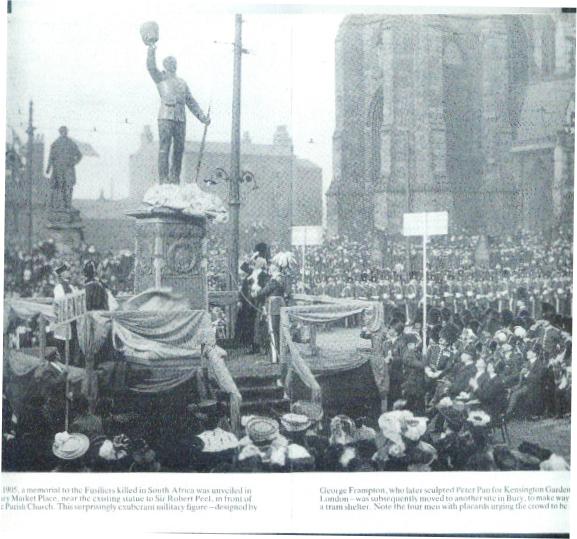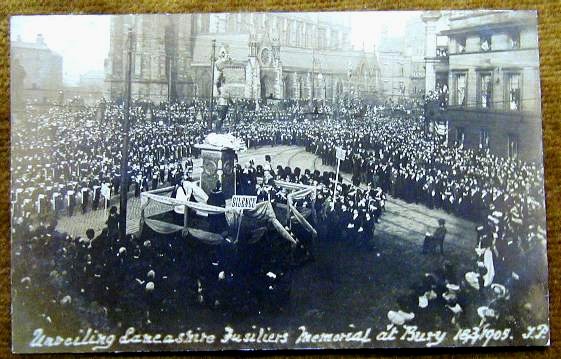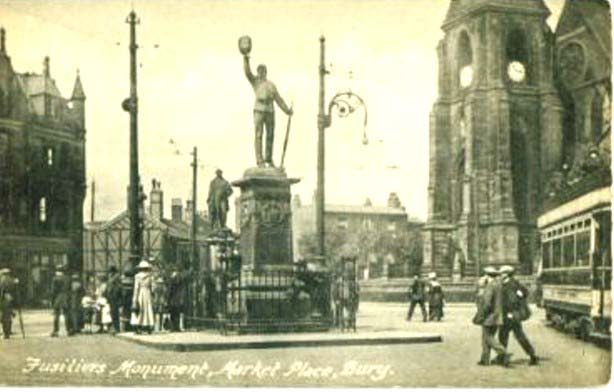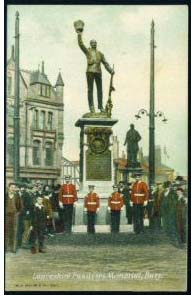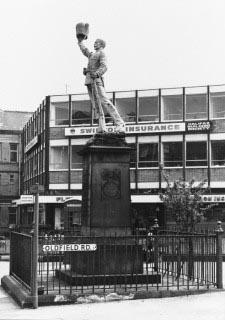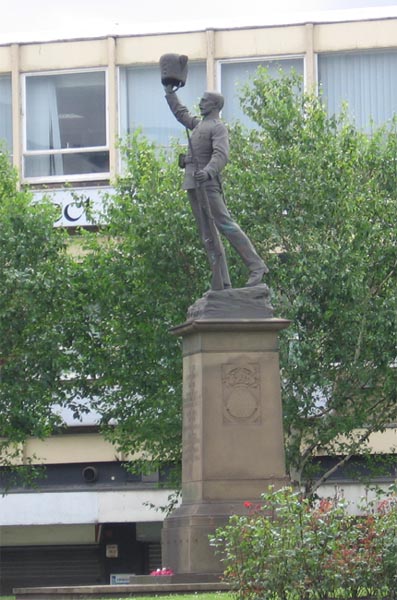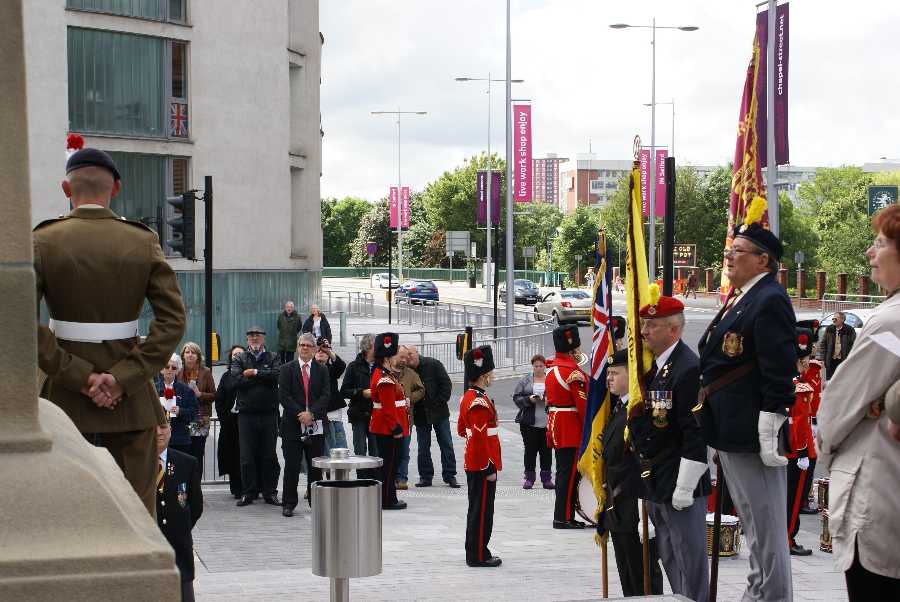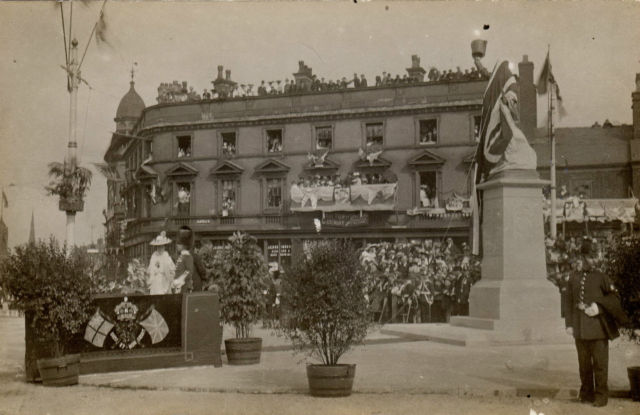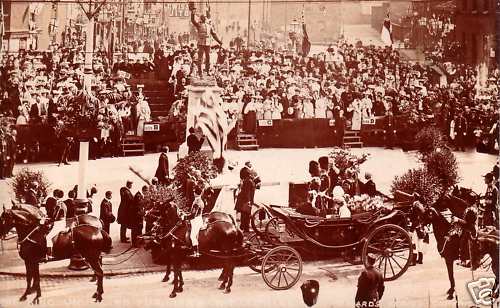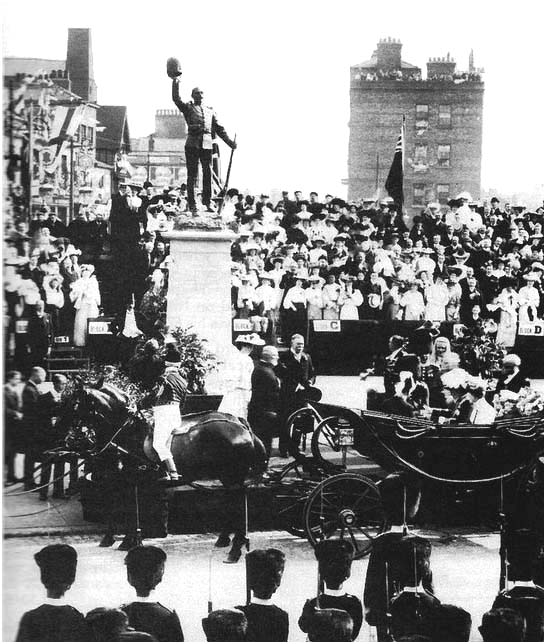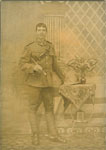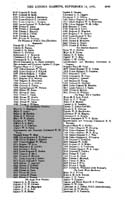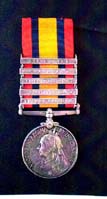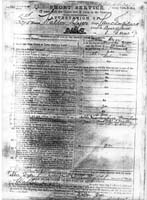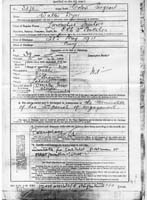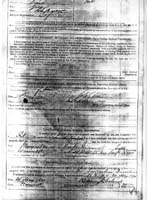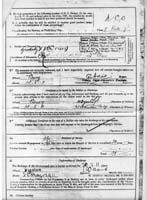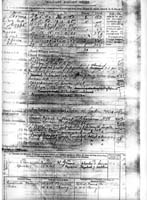|
The Feature Page |
|
On the 10th January 2004 a new message appeared
on the web site of the Lancashire Fusiliers.
It was from a Beatrix Perry and went as follows:- "Hello chaps! You may wonder what a lady is doing sending a message to the LF Message Board because obviously I can't be an ex-fusilier! I am relating this on behalf of my grandfather who died in 1924 and was a colour sergeant in the LF based in Bury from about 1890 until just after the turn of the 20th century. My grandfather was and I suspect that his most outstanding achievement for the regiment was being asked to pose as a model for the Bury War Memorial (there is also a duplicate memorial opposite the Royal Infirmary in Manchester.) I have visited the memorial in Bury and compared the statue to an original water clolour of my grandfather in LF uniform which was painted at Aldershot. There is no doubt that he was the model for the memorial because the sculptor captured grandfather's features perfectly! I never met my grandfather because I was born thirty years after his death but his daughters, my mother and aunt (now both deceased) related stories about him to me. I hope you find this of interest. Please could you tell me if the Museum of the LF's is still at Wellington Barracks? I would love to visit it because my mother was born there. Thank you and best wishes. As editor I replied and she subsequently sent me
this scan of the water colour she has in her possession. |
||
.jpg) |
||
|
I own a copy of the book"Hell's Foundations"
by Geoffrey Moorhouse in which there is a pic of the unveiling ceremony
of the Statue which now stands on Manchester Road Bury but which was
originally unveiled on Bury Market Place. This ceremony took place in
1905 to commemorate the Lancashire Fusiliers who had died fighting in
South Africa during the Boer War.The statue has become known as "The
Shouting Fusilier" and was designed by George Frampton who later
sculpted the Peter Pan statue in London's Kensington Gardens.
|
||
|
taken by Colin Fletcher's son 2014
|
||
|
I informed Beatrice that in the 1980s I had purchased
a ceramic model of the statue which is number 42 in a limited edition
of 150, sculpted by Michael Sutty, who sadly died on 5th November 2003.
I bought the figure from Lawrence Stacey for £250.
|
||
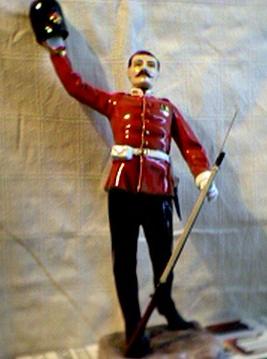 ........ ........
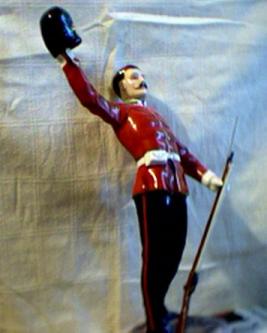 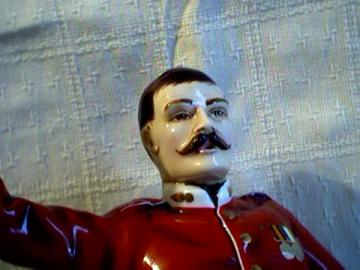 ....... .......
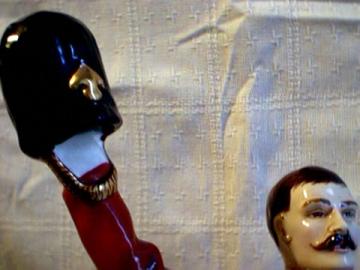 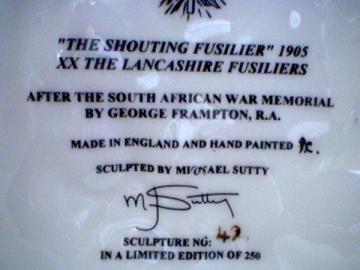 ..... .....
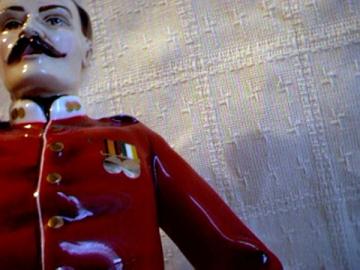 |
||
|
(Extract taken from the "Birmingham News"-
1922)
With Kitchener to Khartoum Inspector Dyer was a remarkable personality in many ways and was a well-known and popular figure to the many thousands who visited Cannon Hill Park, Birmingham. Born in a Warwickshire village, he came to Birmingham and in 1889 he joined the Lancashire Fusiliers. He had not long been in the army when his battalion was sent out to Egypt, under orders to proceed with the Expeditionary Force for the re-conquest of the Soudan, (sic), after the death of General Gordon. He went up the Nile under Lord Kitchener, and helped to wrest Khartoum from the Arabs. Among his comrades were Inspector Oliver, who became his colleague at Cannon Hill park in the City parks Police, and ex-Colour Sergeant Davis, of Sparkbrook. Mr. Dyer also took part in the occupation of Crete in 1898, and when the South African War broke out he was sent to the war zone with his regiment, participating in the relief of Ladysmith, the battles of Laingsnek, Tugela Heights, and saw service in the Orange Free State and the Transvaal, serving from 1899 to the close of war in 1902. He was very popular in his regiment, for his fine soldierly character and on his return to the home establishment he became the doyen of the regiment. He rose to the rank of colour-sergeant. A man of splendid physique and bearing, he was chosen as the model for the memorial erected for the Lancashire Fusiliers who fell in the South African War. He left the army after 21 years service in 1910, with five decorations, including the Khedive's medal with Khartoum bar; the south African medal; King Edward's medal; the Queen's Soudan (sic) medal and the Long Service and Good Conduct medal. Some time ago he was made Inspector of the Parks Police. With
the men and the public he was most popular and his death is much deplored.
The large attendance at the funeral was evidence of the respect in
which he was held and of the sorrow occasioned. Another notable incident was the casting of roses into the grave by the old soldiers of the Lancashire Fusiliers, as the coffin was lowered. This is the historic custom of the regiment in remembrance of Minden Day, the great eighteenth century battle in which the Fusiliers took a leading part. |
|
"Early in June 2009 I received
an email from a Henry Pederson of Denmark.
He wished to let me know that he owned the Queens South Africa medal awarded to Sgt Walter Dyer. The medal had been purchased in London in the 1970s. He subsequently sent me a pic of the medal and copies of Sgt Dyer's service records. It is of particular note that Sgt Dyer had in fact been Mentioned in Despatches in 1901 and I was able to get a copy of his listing in the London Gazette. Joe Eastwood-Editor-17 June 2009." |

